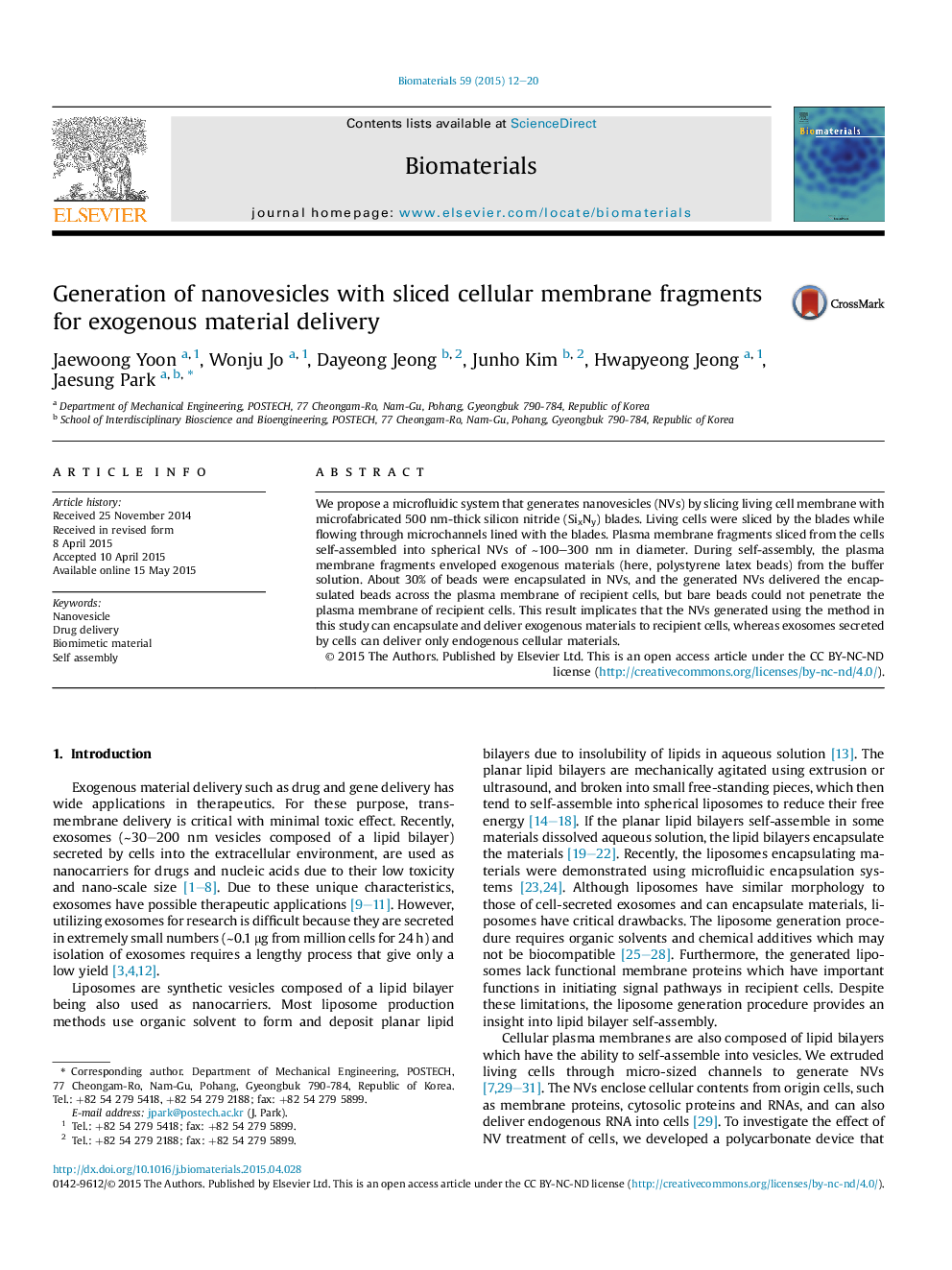| Article ID | Journal | Published Year | Pages | File Type |
|---|---|---|---|---|
| 6485673 | Biomaterials | 2015 | 9 Pages |
Abstract
We propose a microfluidic system that generates nanovesicles (NVs) by slicing living cell membrane with microfabricated 500Â nm-thick silicon nitride (SixNy) blades. Living cells were sliced by the blades while flowing through microchannels lined with the blades. Plasma membrane fragments sliced from the cells self-assembled into spherical NVs of â¼100-300Â nm in diameter. During self-assembly, the plasma membrane fragments enveloped exogenous materials (here, polystyrene latex beads) from the buffer solution. About 30% of beads were encapsulated in NVs, and the generated NVs delivered the encapsulated beads across the plasma membrane of recipient cells, but bare beads could not penetrate the plasma membrane of recipient cells. This result implicates that the NVs generated using the method in this study can encapsulate and deliver exogenous materials to recipient cells, whereas exosomes secreted by cells can deliver only endogenous cellular materials.
Related Topics
Physical Sciences and Engineering
Chemical Engineering
Bioengineering
Authors
Jaewoong Yoon, Wonju Jo, Dayeong Jeong, Junho Kim, Hwapyeong Jeong, Jaesung Park,
